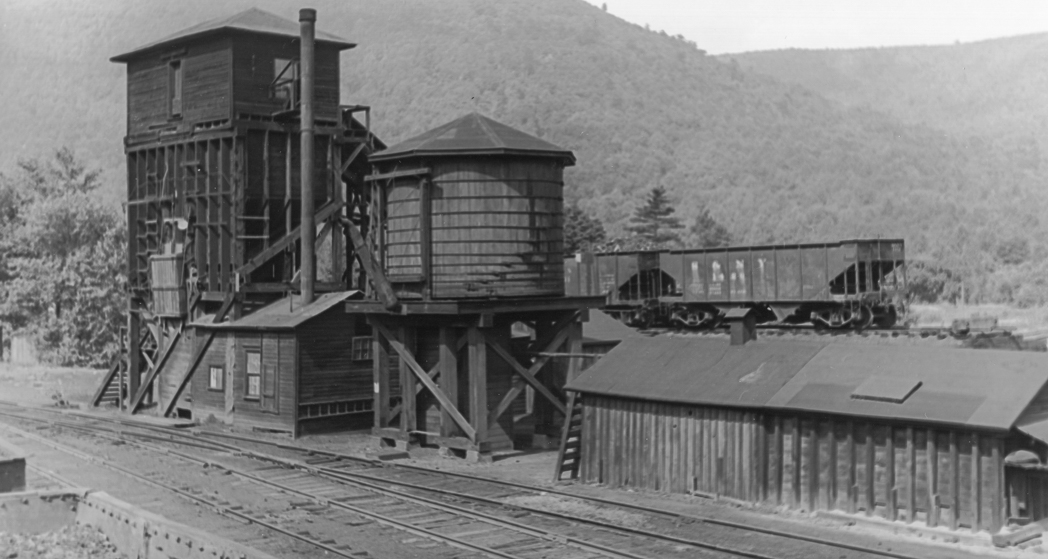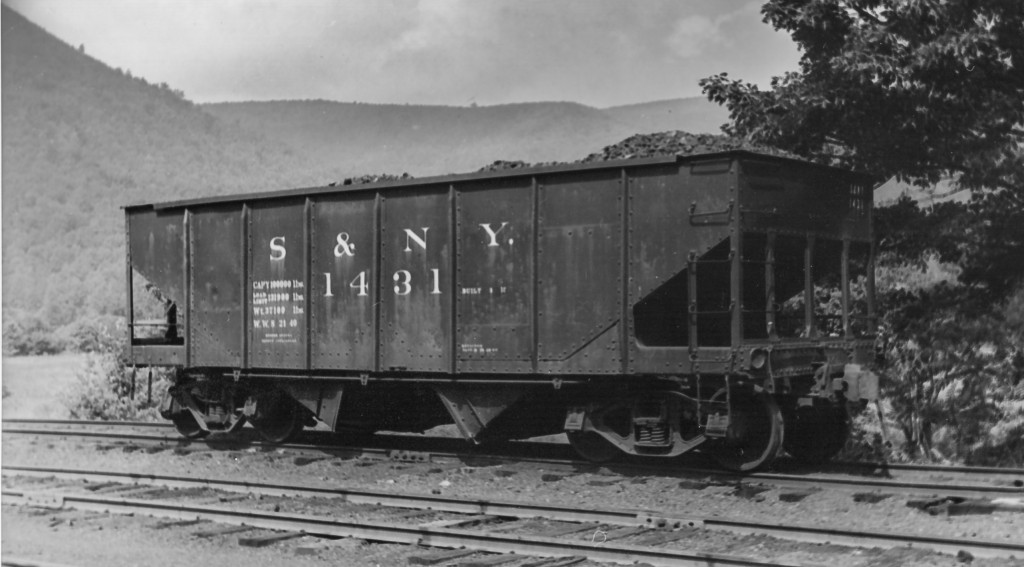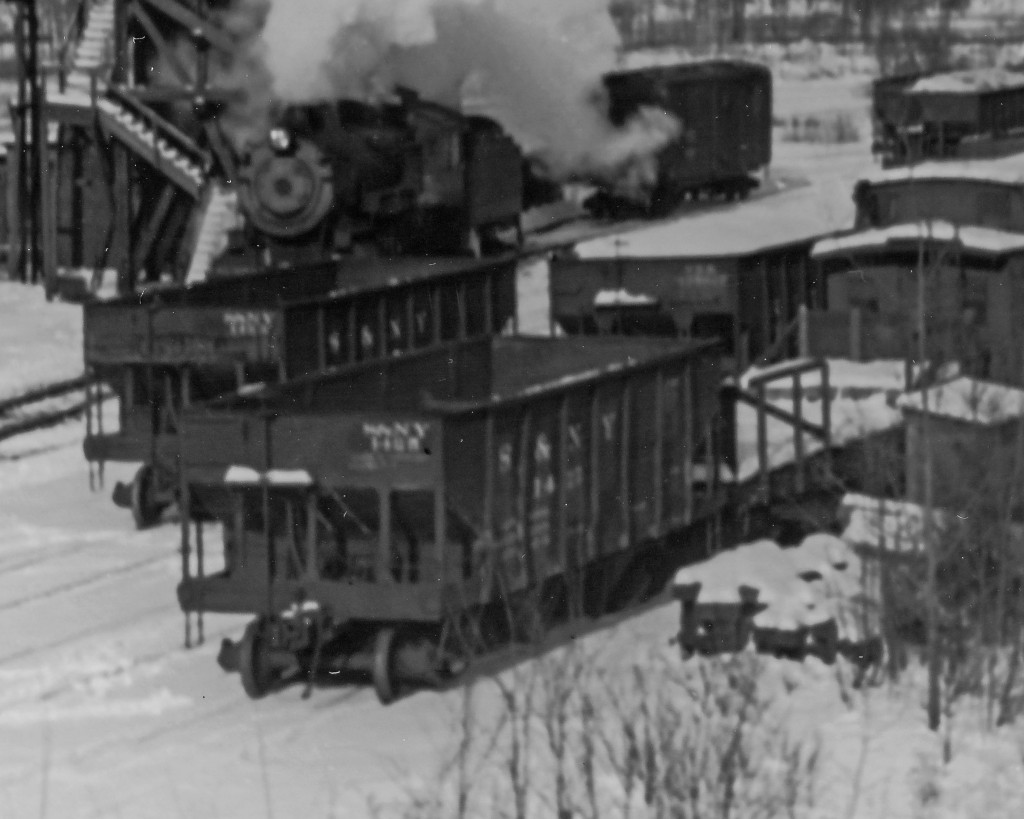A rare pre-war color image of SNY #116 at the Towanda ashpit is the subject of last week’s “WW #101”. Hopper #1414 is one of 17 pre-USRA cars acquired used from the NYC.
SNY Hopper Car
The Susquehanna & New York Railroad rostered a fairly large number of revenue cars for its size. The 1906 ORER states the SNY had 212 items of revenue rolling stock, including 4 box cars, 20 hopper cars, and 80 (!) flat cars. By 1940, however, the number of revenue cars had dwindled to 32. Among these remnants was a series of 10 50-ton capacity hopper cars numbered 1423 -1432. I inquired about this car on the Steam-Era Freight Car group on Yahoo, and received a number of well-researched replies, including a detailed message from the late Bob Karig, noted hopper car expert.
Per that discussion, it seems that this car is one of ten pre-USRA cars bought second-hand from the New York Central in 1940. It was part of a lot manufactured for the NYC by Standard Steel Car Company in 1917, and was an evolution from was called the 1905 Common Design. This car pre-dated the “standard” USRA twin hopper design. Consequently, there is no accurate model of this car in any scale. Al Westerfield mentioned in the Yahoo group discussion that he had wanted to develop a resin model of this type of car, but never got to it.
According to Kaseman’s book, the hoppers were sold to the Tennessee Valley Authority after abandonment in 1942.
I will need a handful of these cars for my model version of the SNY, but I will probably never get around to scratchbuilding them. I will probably settle for Bowser GLa cars as a stand-in. Perhaps Bowser might be interested in doing a run with SNY lettering…Also note the distinctive Bettendorf T-section trucks, as an aside.
Here are a couple more of these cars in Marsh Hill yard, probably during the winter of 1941-42.



Recent Comments